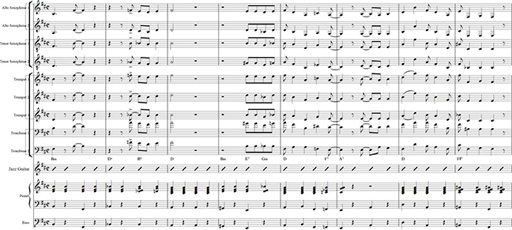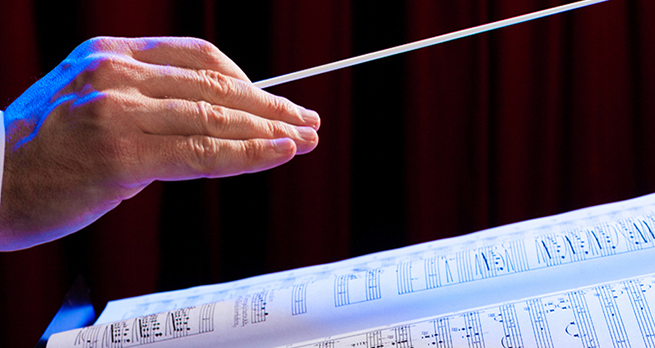3.3 Introducing jazz instrumentation and notation
Now we are going to look at some music of a completely different style and apply what you have learned to it.

At first glance, this score looks a lot larger than the Schubert example that you’ve been studying this week. However, you will also notice that the instruments are often grouped together and, as we mentioned last week, this is a convention of writing for the jazz orchestra, or big band, in the swing era (around the 1930s). Therefore, you can think about following this score in terms of four key groups: saxophones, trumpets, trombones and finally the rhythm section, which contains piano, guitar, bass and drums (which are not shown in this score).
It’s worth pausing to think about the different roles of the instruments in the rhythm section and, in particular, how they are notated. As the term suggests, instruments in this section are responsible for providing the rhythmic pulse and drive for the ensemble, but they also provide a harmonic basis. There are many unwritten conventions associated with the way in which they do this, which musicians have to be aware of – the notation often only provides a basic guide to the structure of the piece.
